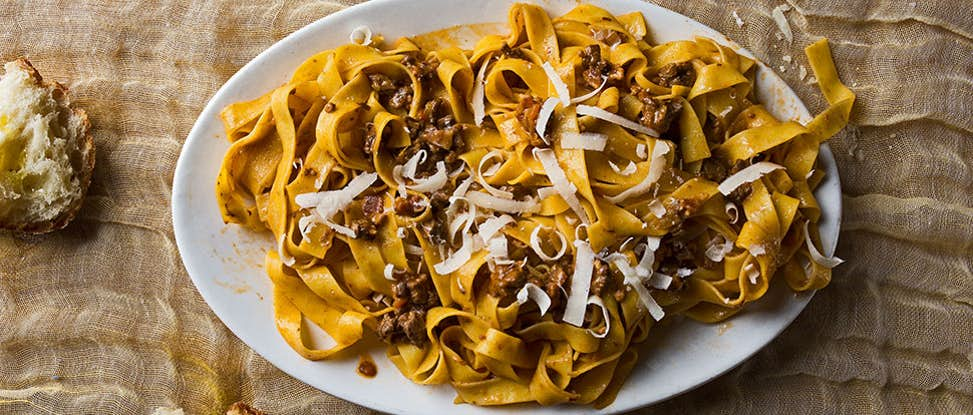Chez Panisse chef and owner Alice Water’s passion for food transcends the kitchen
By Giovanni Cambizaca
Something I’ve noticed recently is that I’m hearing a lot more birdsong. I don’t know if that’s because my world is suddenly a lot quieter, or if that same stillness is encouraging the birds to lift up their voices. Whatever the reason, it’s a small island of solace in our uncharted, wine-dark sea.
A couple of weeks ago I wrote about Julia Child, and that got me thinking about the other chefs who brought a French influence to American cooking after the Second World War. So today I’m going to write about another of these pioneering chefs, Alice Waters.
Alice graduated from the University of California, Berkeley in 1967, receiving a degree in French Cultural Studies. While at Berkeley, she studied abroad in France, and during her time there she says she “lived at the bottom of a market street” and “took everything in by osmosis”. Taking advantage of her local market, she shopped for local produce and prepared fresh, simple meals. This experience was the foundation of Waters’ interest in the farm-to-table and Slow Food movements.
After graduating, Alice spent some time traveling, including a further year in France, which solidified her love of food and all things French and inspired her to return to California in 1971 and open her restaurant Chez Panisse. Here, she focused on serving fresh, local ingredients, and was responsible for creating ‘California Cuisine’.

Alice Waters
Just a few years later, Chez Panisse was named one of the best restaurants in America and became one of the hottest dining locations in the Bay Area. Asked what she was trying to achieve at Chez Panisse, Waters says, “I was always looking to this French model of a little restaurant, not fancy, maybe one Michelin star, with every detail just so. People thought I was obsessed about lighting, portion size, and everything else. And I was pretty uncompromising, but I was also always willing to listen to somebody with a better idea. I wanted people to love what we were cooking. That was most important.”
Among her influences, Alice counts English cookery writer Elizabeth David and French legend Lulu Peyraud, who I wrote about a few weeks ago. Of her time spent with Lucien and Lulu Peyraud, Waters wrote, “Lucien and Lulu’s warmhearted enthusiasm for life, their love for the pleasures of the table, their deep connection to the beautiful earth of the South of France – these were things I had seen at the movies. But this was for real. I felt immediately as if I had come home to a second family.”
In addition to being a passionate cook, Waters is also politically active. In her Berkley days, she was involved in the Free Speech and anti-Vietnam War movements. In celebration of the restaurant’s 25th anniversary, Waters founded the Chez Panisse Foundation in 1996, whose mission is to transform public education by using food to teach, nurture, and empower young people. Since 2002, Alice has served as a Vice President of Slow Food International, to further the goal of passing on food knowledge and traditions to future generations.
This week my recipe comes, of course, from Alice Waters, and I’ve adapted it a bit to increase the chance you will have the ingredients, but feel free to make substitutions as necessary. Alice recommends serving this with pappardelle, but any pasta in your cupboard will be fine. It’s important to add the liquid in batches as needed, if you try to add it all in the beginning you will have boiled meat sauce rather than a rich, thick meaty sauce.

Pappardelle Bolognese – a classic
Alice Waters’ Bolognese Sauce
Heat in a large heavy-bottomed pot: 1 tablespoon olive oil
Add: 2 ounces bacon, diced fine
Cook over medium heat until lightly browned, about 5 minutes, then add: 1 small onion, diced fine 1 celery stalk, diced fine 1 carrot, diced fine 2 garlic cloves, finely chopped 5 sage leaves or equivalent dried sage 2 thyme sprigs or equivalent dried thyme 1 bay leaf
Cook over medium heat, stirring occasionally, until tender, about 12 minutes.
While the vegetables are cooking, heat in a large heavy-bottomed pan, preferably cast iron: 1 tablespoon olive oil
Add and brown over medium-high heat, in two batches: 1 pound ground beef 4 ounces ground pork
Cook until the meat is a nice chestnut color. Once all the meat is browned, pour in: 1 cup dry white wine
Reduce the wine by half, scraping the brown bits off the bottom of the pan. Add the browned meat and the deglazing juices to the tender vegetables along with: 2 tablespoons tomato paste Salt
Measure and stir together: 2 cups beef or chicken broth 1 1/2 cups milk
Pour enough of this liquid into the pot to bring it to the level of the meat and vegetables. Simmer gently until the meat is very tender, about 1 1/2 hours. As the liquid reduces, keep topping it up with the rest of the broth and milk, and skimming the fat that rises to the surface.
When the meat is tender, remove the sauce from the heat and season to taste with more salt, if needed, and fresh-ground black pepper
Variation: Include 1/4 cup dried mushrooms, soaked, drained, and chopped fine, with the diced vegetables.
Te enviamos un abrazo
Giovanni, Maria Eliza y toda la familia Le Petit





















